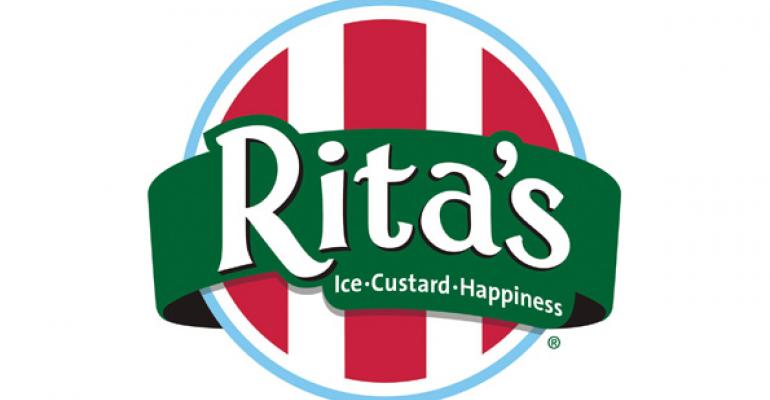Rita’s Italian Ice has replaced the frozen custard used in many of its menu items with soft-serve ice cream, after a supplier stopped making liquid egg yolks in June that the chain’s dairy used to make its custard.
The 600-unit, Trevose, Pa.-based chain announced the substitution on its website.
“We’ve had no disruption in service,” Jeff Moody, CEO of parent Rita’s Franchise Company, told Nation’s Restaurant News Thursday. “We use a premium soft-serve ice cream. We have our complete menu. We just have to use a substitute until we get a supply of eggs again.”
In the spring, an outbreak of the H5N2 virus in poultry in the Midwest, particularly in Minnesota and Iowa, devastated the egg-laying hen population. More than 48 million birds were affected by the outbreak, which began in December, according to the U.S. Department of Agriculture.
As a result, the price of eggs more than doubled from April through June, according to federal data. While it has been weeks since the last virus was detected in the bird population, high prices and periodic shortages have persisted, forcing restaurant chains to raise prices or, in some cases, limit supply.
Some concepts have taken drastic measures. In June, San Antonio-based quick-service chain Whataburger cut its breakfast hours, citing a lack of eggs. It has since restored its full breakfast hours.
Liquid eggs have been more severely impacted. The price of liquid eggs has risen 260 percent since early May, according to federal data, and many suppliers have stopped producing liquid eggs altogether.
The supply of eggs used for liquid eggs is much more limited than is the supply of shell eggs, and so the shortage impacted those prices more.
“The number of birds they killed was astronomical,” said Brian Miller, vice president of services at Phoenix-based online sourcing platform Intesource. “That pulled a lot of eggs out of circulation.”
Liquid eggs are not a significant part of restaurant chains’ commodity basket, but they can be used in many items, from baked goods to breakfast sandwiches to frozen custard.
“Even though it’s not a huge ingredient on a per-gallon basis, it’s big in aggregate,” Moody said. “Our dairy purchases a large amount of egg yolk from the Midwest. That area was hit hardest.”
Rita’s has monitored the situation since it emerged in the spring, and began preparing contingency plans in case it had to deal with a spike in egg prices. Its planning included finding a solution in case it couldn’t get any eggs.
Rita’s, which was founded in Philadelphia in 1984 as an Italian ice stand, serves a number of items with frozen custard, including cones and sundaes, as well as “Gelati,” or custard layered with Italian ice, and a “Misto,” which is custard blended with Italian ice. It also serves shakes and other menu items.
The worst-case scenario came true on June 9, when Moody received a note from the chain’s dairy, which had been informed by its egg supplier that it would no longer make liquid egg yolks. The company had little warning of the situation.
“We knew eggs were getting shorter and there were price impacts,” Moody said. “We were looking at paying more, and we were fine with that. Then, literally out of the blue, we got a note from our dairy, who got a note from its egg supplier, that they were stopping the supply of liquid egg.”
Customer reaction thusfar
Rita’s had been working with its dairy on contingency plans. The dairy gave Rita’s recipes for soft-serve ice cream that it could use to replace the custard. When the supply of yolks stopped, the dairy replaced the custard with the soft serve.
“We had no idea it had gotten that severe,” Moody said. “If we waited until we saw the note, not thinking about it, we would have had tremendous difficulty.”
The dairy developed an ice cream product that Moody says has a texture and taste similar to Rita’s frozen custard, and which can be made with its equipment, but doesn’t require eggs.
Customer reaction has been positive so far, he said. But Rita’s will return to custard as soon as it can get a supply of eggs.
“We’re proud of our custard,” Moody said. “We would not have done this if we did not have this circumstance.”
But when Rita’s can secure an egg supply remains uncertain. While the bird flu seems to have waned, and some prices have started falling, according to federal data, it will still take time for the supply to be replenished. Plants must be sanitized and receive USDA approval before flocks can be replenished. Experts have indicated it could take six months to 18 months before the supply chain returns to normal.
Moody said it could be a year before the market is stable again, but he is confident that the custard will return long before then.
“Our latest information is that the shortage is not getting any worse,” he said.
Miller said that the virus is expected to be under control between July and September, and after that it would take four to six months for a new chick to be able to start laying eggs.
“You’re probably looking at less than 12 months to have everything turned around,” he said.
This story has been revised to reflect the following update:
Update: July 9, 2015 This story has been updated with information from Brian Miller, vice president of services at Phoenix-based online sourcing platform Intesource.
Contact Jonathan Maze at [email protected].
Follow him on Twitter: @jonathanmaze

